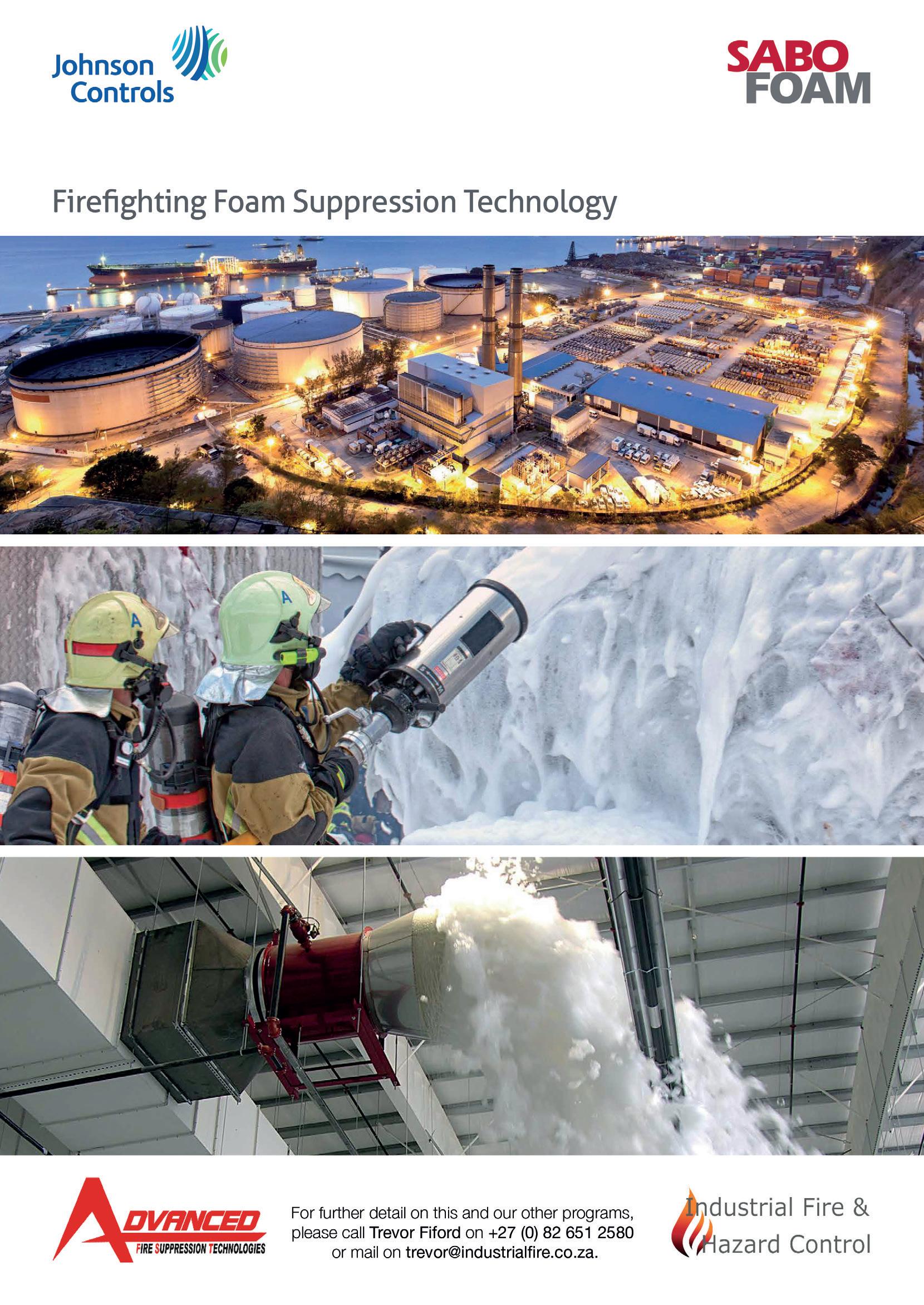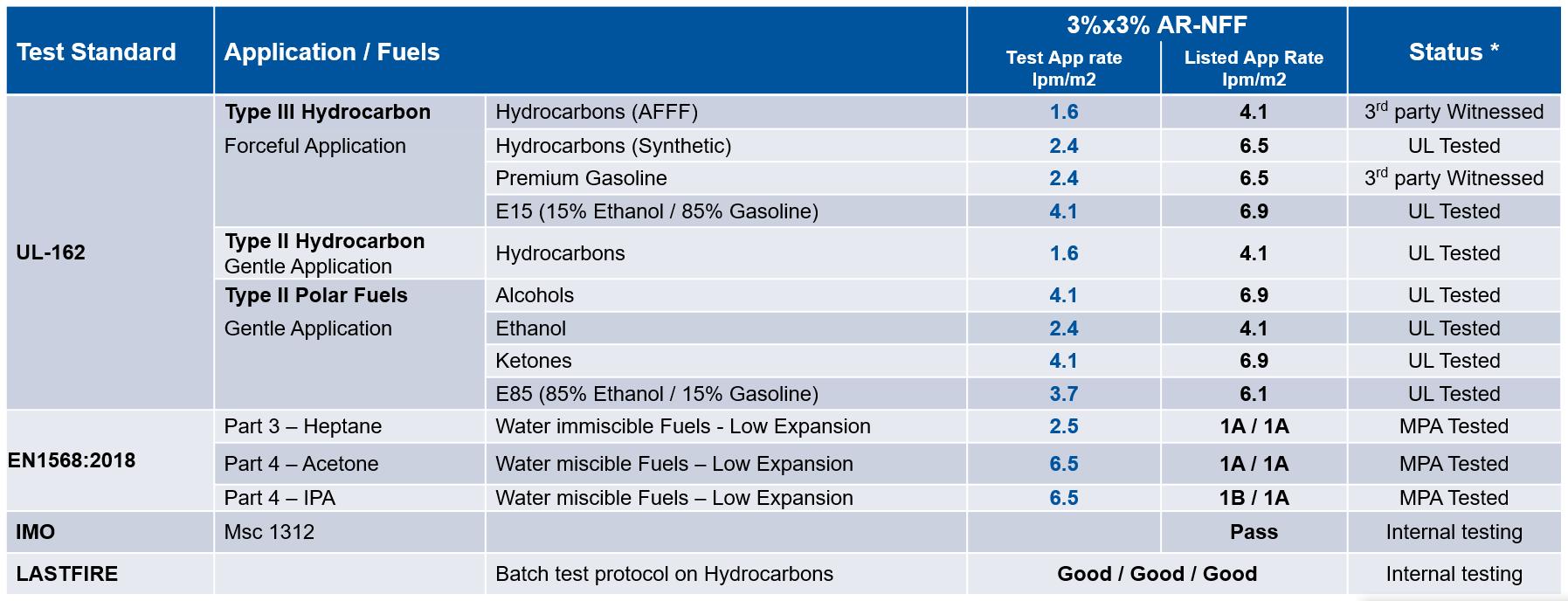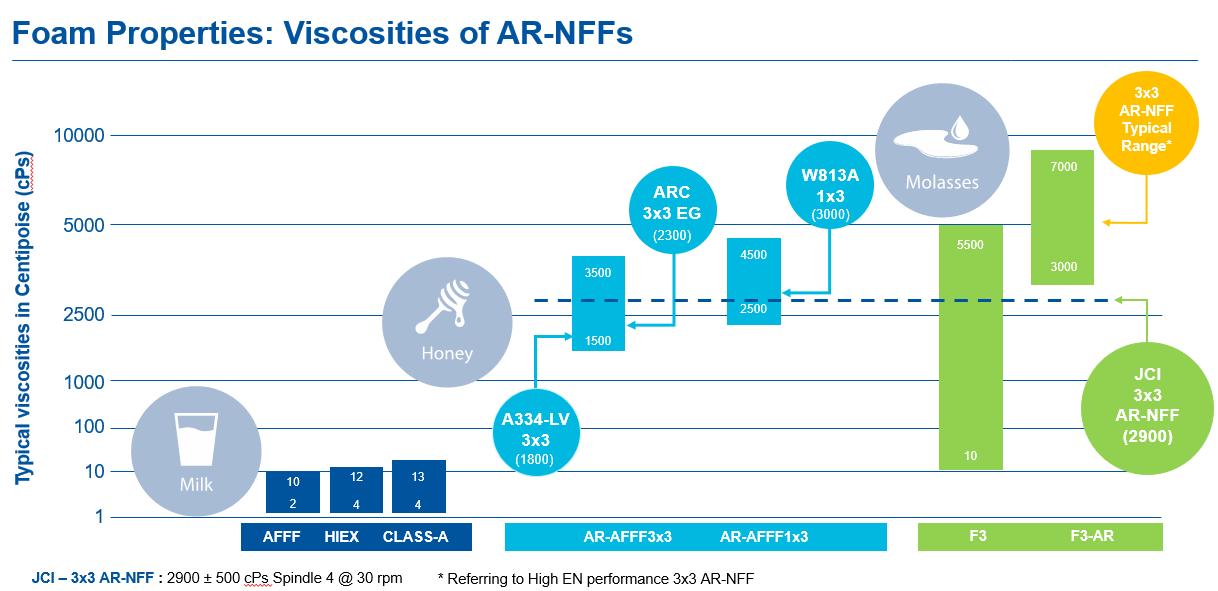
8 minute read
Don’t have the wool pulled over your eyes when it comes to non-fluorinated foams: Here are the facts - by Trevor Fiford
Don’t have the wool pulled over your eyes when it comes to non-fluorinated foams: Here are the facts
Advertisement
After more than 15 years of development, manufacturers of fire fighting foam concentrates have still not been able to come up with a product that can be seen as a 100 percent drop-in replacement for the existing AFFF and AR-AFFF foam concentrates in service in the market. Although there are many claims from specific manufacturers that their ‘Fluor free’ product is the perfect solution, we have come to the realisation that the perfect solution does not yet exist.
There are many factors that come into the equation when looking for a ‘perfect solution’. In our opinion, the perfect solution is when a Fluor chemical containing product can be taken out of the system, the system be purged to get rid of the left over fluorochemicals and a new non fluorinated product can be put in without any further change required to the rest of the system. And we mean from A to Z. From the water supply system through to the discharge device.
And this is where the issue lies. Besides that, we have seen some, let’s say, strange behaviour of ‘Fluor free’ foam concentrates, like separation or aggregation, so we need to look at all the physical properties as well as performance and application method.
Once it is established that a product is stable and has a long enough shelf life, the required time must be allowed to put the product through its paces by one of the internationally recognised testing houses. Then we can start to see the product’s true potential. And here comes the first pitfall: The two main standards used in our industry, the EN1568 and the UL162, look similar but they are from different leagues.
The payload body and locker configuration incorporates a clean and dirty locker principal, thereby eliminating the potential for sensitive electronic equipment, software or other load bearing equipment and compressed gasses being contaminated by or exposed to hydrocarbon fuels or lubricants. This prevents the degradation of compounds and materials susceptible to vapour attack. A modular storage system allows for easy identification and inventory of equipment, whilst ensuring that related items is stored together. This also promotes easy removal, transport, staging and deployment of equipment items whilst offering protection from weather elements when not stowed and possible damage being sustained under response driving conditions. Certain interior locker areas also allows for future expansion of the equipment cash.
Vehicle mounted crane
The Palfinger PK18500 Performance has a lifting capacity of 8 185kg at 2,00 metres and 570kg at a maximum reach of 18,65 metres. The 4,8-metre outrigger system ensures good stability and two control console with duplicate operating levers is mounted to facilitate operations from either side of the vehicle.


Application rate challenge
The EN1568 part 3 and 4 (low expansion for hydrocarbons and low expansion for polar fuels) with a 1A rating, gives a mere 58 percent safety factor margin between the test application rate and the recommended design application rate for hydrocarbons. This even goes down to a worrying 21 percent safety margin for water miscible fuels.
The UL162 tests at a much lower application rate and comes with a similar design application rate compared to the EN standards. In doing so, UL gives a safety margin between test- and design application rate of over 150 percent for hydrocarbons and 67 percent for water miscible fuels.
There is, however, an unfortunate differentiation in the UL standard here; where EN1568 allows both film-forming and synthetic (non-filmforming) products to be tested at the same rates, UL162 has a separation between the two categories.
The synthetic category (S) is tested with a 50 percent higher test application rate (1,6 lpm/m2 vs 2,4 lpm/m2) and a five minute foam application time compared to the three minutes for film-forming products. This leads to a 250 percent higher volume of foam to be applied during testing (22,7 litres to 56,75 litres). So even if an UL-listed AFFF or AR-AFFF is replaced by an UL-listed non-fluorinated foam concentrate, there is a design application rate difference between 4,1 lpm/m2 for film forming products and 6,5 lpm/ m2 for synthetic products (S) for type 3 application.
Until the UL162 standard will be revised to accommodate for higher performing non fluorinated products, there is no other option to have a foam concentrate witness tested at the AFFF category and, by doing so, give end-users the assurance that the product has an equal fire extinguishing performance to the film forming products with UL listing.
If a product can’t be tested at this lower AFFF category, the capacity of the foam system has to be increased by 50 percent. This significant increase goes all the way from water supply to discharge devices; more foam solution on the risk means bigger and more discharge devices, larger piping, fittings, pump and water storage. The cost implications of this glitch in the design standard are huge.
JCI challenged this differentiation and decided to have their nonfluorinated foam agent, the NFF 3x3 UL201 tested against the stricter AFFF/AFFF-AR standard, which they passed with flying colours. Another test required by our main global customers is the Large Atmospheric Storage Tank Fire Test (LASTFire). Also this test was passed with GOOD/GOOD/GOOD results.
The products’ capabilities have been stretched to a realistic scale scenario and successfully tested on a 130m2 tank using a nonair aspirating type nozzle by our partners Williams Fire and Hazard Control. Not only did JCI pass these tests but whilst doing that, they broke another barrier, which was until then not seen before with nonfluorinated foam agents.
Expansion rate challenge
The absence of Fluor chemicals in a non-fluorinated foam negates a very important aspect of fire fighting foams ie film formation.
Fluor chemicals gives AFFF and AR-AFFF concentrates their key and unique advantages: oleophobicity and film formation. When the foam is applied to the surface of the fuel it drops into it and rises to the surface. Due to the fluorochemical properties, the foam will barely be affected by fuel contamination. Then a watery film is formed on the fuel surface preventing vapours from burning.
Non-fluorinated foam concentrates don’t benefit from this phenomenon. The only way to create a barrier between the fuel and oxygen is to have a robust foam blanket. To
achieve this, you need a higher expansion ratio. The National Fire Protection Association’s (NFPA’s) in the United States research work done in 2019, suggests that non-fluorinated foam agents may require an expansion up to seven or even 10 to one to reach similar performance of regular AFFF/ARAFFF concentrates.
Knowing that most, if not all, discharge devices installed have an expansion ratio of around three to five, this means that making the transition to non-fluorinated foam concentrates also means the change-out of the discharge devices. Or in case of type 3 direct application with mobile monitors the throw length, which is basically the safety distance, is reduced by almost 20 percent.
Without adding fluorochemicals, the recently launched Tyco NFF 3x3 UL201 passed the above mentioned stricter UL AFFF/AFFFAR test at an expansion ratio of three to one on hydrocarbons.
Proportioning challenge
Another issue that is faced by the industry is the proportioning of these new non-fluorinated foam concentrates and their viscosity. This viscosity is typically much higher than regular AR-AFFF concentrates. Between two to five times higher for the alcohol resistant types are no exception; this might create problems with proportioning accuracy. Whatever proportioning type is used, re-certification and/or re-calibration will be required.
Thus make sure when making the transition that the selected non-fluorinated product has an acceptable viscosity so it will work seamlessly with your foam proportioning system. The development target applied by Tyco for the NFF 3x3 UL201 was to give this product viscosity properties similar to other high quality AR-AFFF 3x3 products available in the marketplace.
What’s next?
Choosing the right non-fluorinated foam concentrate is only one step in the transition away from fluorinated products.
It is not going to be a simple and easy journey. Making sure that you can hold onto your existing system as much as possible is paramount. Replacing the foam agent without taking all of the above into consideration will lead to significant cost and downtime to increase the system’s capacity, proportioning and/or discharge devices.
Bear in mind that a 50 percent increase in application rate ie from 4,1 to 6,5 litres per minute per square metre for an average sized area like 1 600m2 (a pump pit, diked area or 45m diameter tank), leads to the following numbers: (table below)
This means a significant increase of the water and foam concentrate storage, pump size, the piping, the proportioning system, valves and discharge devices.
This all sounds extremely logical but we have seen many instances where all these factors were not taken into consideration and the end user ended up with a system, which wasn’t capable to do the job it was initially designed for.
Last but not least, if local legislation is in place for the phase out of fluorinated products, it will be with certain thresholds on PFOA/PFAS/PFHxA levels. These levels determine the cleaning work to be executed in your existing systems. When these thresholds get to Parts per Billion level (PPB), it means that any trace of fluorinated product in your system might still lead to violation of the local regulations. Therefore, there is not one global guideline for this transition. It all depends on regional requirements. Whether you are in Europe or Africa, in the USA or South East Asia, a bespoke solution has to be applied.
As always, you can reach out to us whenever you need more information or support on your foam related issues.

Application rate Required flow Required water volume (30 min application) Required foam agent volume (30 min application) 4,1 6,5 lpm/m2 6.560 10.400 lpm 1.968 3.120 m3 5.904 9.360 litre










